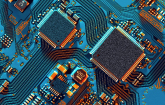BANGALORE, India, June 2, 2025 /PRNewswire/ -- Burn-In Test System for Semiconductor Market is Segmented by Type (Static Testing, Dynamic Testing), by Application (Integrated Circuit, Sensor, Discrete Device, Optoelectronic Device).
The global market for Burn-In Test System for Semiconductor was valued at USD 756 Million in the year 2024 and is projected to reach a revised size of USD 1448 Million by 2031, growing at a CAGR of 9.9% during the forecast period.
Claim Your Free Report: https://reports.valuates.com/request/sample/QYRE-Auto-11W14648/Global_Burn_In_Test_System_for_Semiconductor_Market
Major Factors Driving the Growth of Burn-In Test System for Semiconductor Market:
The Burn-In Test System for Semiconductor market is experiencing steady growth driven by the rising need for high-reliability electronic components across industries such as automotive, aerospace, consumer electronics, and data centers. As integrated circuits become increasingly complex and are deployed in mission-critical applications, manufacturers are prioritizing burn-in testing to eliminate early-life failures and ensure long-term performance.
The market benefits from the surge in demand for advanced packaging technologies, miniaturized chips, and 5G-enabled devices, all of which require stringent testing standards. Additionally, expanding semiconductor production capacities and growing outsourcing to third-party testing providers further fuel market expansion. Burn-in systems remain essential for maintaining quality assurance and product dependability in the competitive semiconductor landscape.
Unlock Insights: View Full Report Now! https://reports.valuates.com/market-reports/QYRE-Auto-11W14648/global-burn-in-test-system-for-semiconductor
TRENDS INFLUENCING THE GROWTH OF THE BURN-IN TEST SYSTEM FOR SEMICONDUCTOR MARKET:
Dynamic testing significantly contributes to the growth of the burn-in test system for the semiconductor market by enabling manufacturers to detect early-stage failures under real-world conditions. This process involves the application of power, thermal, and signal stress simultaneously, simulating actual operating environments. As semiconductor devices become more complex and integrate advanced functionalities, ensuring operational durability becomes essential. Industries such as automotive, aerospace, and telecommunications rely heavily on chips that perform flawlessly under extreme stress. Dynamic testing identifies latent defects, significantly reducing field failures and warranty costs. With the rising adoption of AI, 5G, and IoT technologies, the pressure to maintain high standards of chip reliability increases, thereby boosting the demand for advanced dynamic burn-in testing systems across global manufacturing hubs.
Static testing drives the burn-in test system market by offering a reliable and cost-effective method to screen out defective semiconductor devices before they reach the end-user. Unlike dynamic testing, static testing applies constant voltage and temperature stress without any signal switching, making it ideal for components like memory chips and analog circuits. It is particularly useful in identifying early-life failures that may not manifest during functional tests. With growing deployment of semiconductor components in safety-critical applications, such as medical electronics and industrial automation, manufacturers are focusing on maximizing component longevity. Static burn-in testing offers an efficient path to achieving this reliability, especially for manufacturers in developing regions looking to balance performance assurance with operational cost efficiency.
The increasing complexity and miniaturization of integrated circuits (ICs) have led to heightened demand for thorough reliability testing, fueling the growth of the burn-in test system market. As ICs integrate multiple functionalities into smaller packages—especially for applications in smartphones, automotive electronics, and advanced computing—the likelihood of hidden defects rises. Burn-in testing ensures that such flaws are identified before the ICs are assembled into final products. Moreover, with the push toward 3D IC architectures and heterogeneous integration, the probability of thermal and electrical stresses increases, demanding comprehensive stress-testing protocols. IC manufacturers are investing in burn-in systems to ensure their products meet stringent quality requirements, helping reduce returns and improve brand reliability across consumer and industrial sectors.
One of the key drivers of the burn-in test system market is the increasing demand for semiconductors that can perform reliably in extreme environmental conditions. This is especially true in sectors such as automotive, aerospace, oil and gas, and defense, where components are often exposed to high heat, pressure, and vibration. To prevent premature failures and ensure safety, these industries require semiconductors that are rigorously tested. Burn-in testing allows for the simulation of these extreme environments and identifies components that are not durable enough to withstand long-term use. This has led to increased investment in burn-in systems by manufacturers who aim to deliver rugged and long-lasting semiconductor solutions for mission-critical applications.
The explosion of consumer electronics and connected devices worldwide significantly propels the demand for reliable semiconductors, thereby increasing the need for burn-in test systems. From smartphones and laptops to smart TVs and wearables, consumers expect seamless, uninterrupted performance. Semiconductor components that fail prematurely can lead to costly recalls and reputational damage. Burn-in testing serves as a frontline defense against such risks by screening out weak components before shipment. As product launch cycles become shorter and device functionalities grow more complex, manufacturers are under immense pressure to ensure quality. Burn-in testing thus becomes a standard quality assurance procedure, especially for high-volume electronics production catering to global markets.
Automotive electronics are experiencing exponential growth due to advancements in electric vehicles (EVs), advanced driver-assistance systems (ADAS), and in-vehicle infotainment. These systems rely on a wide array of integrated circuits and sensors that must function accurately and safely for years. Burn-in testing is essential to automotive OEMs to guarantee the long-term reliability of these chips. The consequences of semiconductor failure in an automotive system can be fatal, making stringent testing non-negotiable. Burn-in systems simulate the extreme thermal and electrical stress conditions these devices will face on the road. This trend drives steady investments by Tier-1 suppliers and semiconductor companies into burn-in infrastructure, supporting the broader automotive safety ecosystem.
As semiconductor technology advances toward 5nm, 3nm, and beyond, devices become more susceptible to process variations and defects. The shift toward these smaller nodes results in denser chips, which are more prone to thermal stress, current leakage, and functional instability. Burn-in testing helps identify devices that may degrade rapidly or fail prematurely, providing manufacturers with insights into process yield and component robustness. Companies leveraging leading-edge process nodes for CPUs, GPUs, and AI accelerators must adopt rigorous burn-in methodologies to ensure end-user satisfaction. This shift directly contributes to the demand for customized and high-throughput burn-in systems capable of handling delicate and complex IC structures.
Burn-in test systems support cost optimization by enabling early identification and elimination of defective semiconductors. Identifying faults during the final stages of production or post-sale results in higher financial losses, including repairs, replacements, and lost reputation. By incorporating burn-in testing earlier in the process, manufacturers avoid unnecessary costs and reduce scrap rates. Moreover, automated burn-in testing equipment can handle large volumes of chips simultaneously, providing a scalable and efficient solution. As competition intensifies and margins shrink, companies are prioritizing lean operations. Burn-in systems offer a practical means to enhance operational efficiency while maintaining high standards of product quality and durability.
Claim Yours Now! https://reports.valuates.com/api/directpaytoken?rcode=QYRE-Auto-11W14648&lic=single-user
BURN-IN TEST SYSTEM FOR SEMICONDUCTOR MARKET SHARE:
Global core manufacturers of Burn-In Test System for Semiconductor for In-line Systems include DI Corporation, Advantest and Micro Control Company.
Asia-Pacific is the largest consumption region, accounting for approximately 80% of the global market. The Asia-Pacific region dominates the burn-in test system market due to the concentration of semiconductor foundries, packaging facilities, and electronics manufacturing hubs in countries like China, Taiwan, South Korea, and Japan. These countries are home to leading chipmakers and testing service providers.
North America follows closely, supported by demand from automotive electronics, aerospace, and enterprise computing sectors.
In terms of type, static testing is the largest market segment, with a share of more than 60%.
In terms of application, the largest is integrated circuit, with a share of approximately 79%.
Key Companies:
- EDA Industries
- Aehr Test Systems
- KES Systems
- Advantest
- DI Corporation
- Micro Control Company
- STK Technology
- ESPEC
- Zhejiang Hangke Instrument
- STAr Technologies (Innotech)
- Chroma
- Trio-Tech International
- Wuhan Eternal Technologies
- Wuhan Jingce Electronic
- Shenzhen Kingcable
- Wuhan Precise Electronic
- Electron Test Equipment
- Guangzhou Sairui
Purchase Chapters: https://reports.valuates.com/request/chaptercost/QYRE-Auto-11W14648/Global_Burn_In_Test_System_for_Semiconductor_Market
SUBSCRIPTION
We have introduced a tailor-made subscription for our customers. Please leave a note in the Comment Section to know about our subscription plans.
DISCOVER MORE INSIGHTS: EXPLORE SIMILAR REPORTS!
- The global Burn-in Test Equipment for Semiconductor market was valued at USD 685 Million in 2023 and is anticipated to reach USD 1330 Million by 2030, witnessing a CAGR of 9.9% during the forecast period 2024-2030.
- Burn-in Boards Market
- Memory Chip Burn in Test System Market
- Semiconductor Test and Burn-in Solutions Market
- The global market for Silicon Carbide Wafer Burn-in System was valued at USD 137 Million in the year 2024 and is projected to reach a revised size of USD 180 Million by 2031, growing at a CAGR of 4.0% during the forecast period.
- Burn-in Board Testers Market
- The global market for Optical Chip Test System was valued at USD 330 Million in the year 2024 and is projected to reach a revised size of USD 449 Million by 2031, growing at a CAGR of 4.5% during the forecast period.
- The global Diode Aging Test System market was valued at USD 11 Million in 2023 and is anticipated to reach USD 15.5 Million by 2030, witnessing a CAGR of 5.0% during the forecast period 2024-2030.
- The global market for Semiconductor Testing Service was estimated to be worth USD 6209 Million in 2023 and is forecast to a readjusted size of USD 8302.7 Million by 2030 with a CAGR of 4.3% during the forecast period 2024-2030.
- Chip on Submount (CoS) Bounding & Testing Solution Market
- The global Test & Burn-in Socket Market revenue was USD 1232.3 Million in 2022 and is forecast to a readjusted size of USD 2069.5 Million by 2029 with a CAGR of 7.6% during the forecast period (2023-2029).
DISCOVER OUR VISION: VISIT ABOUT US!
Valuates offers in-depth market insights into various industries. Our extensive report repository is constantly updated to meet your changing industry analysis needs.
Our team of market analysts can help you select the best report covering your industry. We understand your niche region-specific requirements and that's why we offer customization of reports. With our customization in place, you can request for any particular information from a report that meets your market analysis needs.
To achieve a consistent view of the market, data is gathered from various primary and secondary sources, at each step, data triangulation methodologies are applied to reduce deviance and find a consistent view of the market. Each sample we share contains a detailed research methodology employed to generate the report. Please also reach our sales team to get the complete list of our data sources.
GET A FREE QUOTE
Valuates Reports
sales@valuates.com
For U.S. Toll-Free Call 1-(315)-215-3225
WhatsApp: +91-9945648335
Website: https://reports.valuates.com
Blog: https://valuatestrends.blogspot.com/
Pinterest: https://in.pinterest.com/valuatesreports/
Twitter: https://twitter.com/valuatesreports
Facebook: https://www.facebook.com/valuatesreports/
YouTube: https://www.youtube.com/@valuatesreports6753
https://www.facebook.com/valuateskorean
https://www.facebook.com/valuatesspanish
https://www.facebook.com/valuatesjapanese
https://valuatesreportspanish.blogspot.com/
https://valuateskorean.blogspot.com/
https://valuatesgerman.blogspot.com/
https://valuatesreportjapanese.blogspot.com/
Logo: https://mma.prnewswire.com/media/1082232/Valuates_Reports_Logo.jpg






Share this article